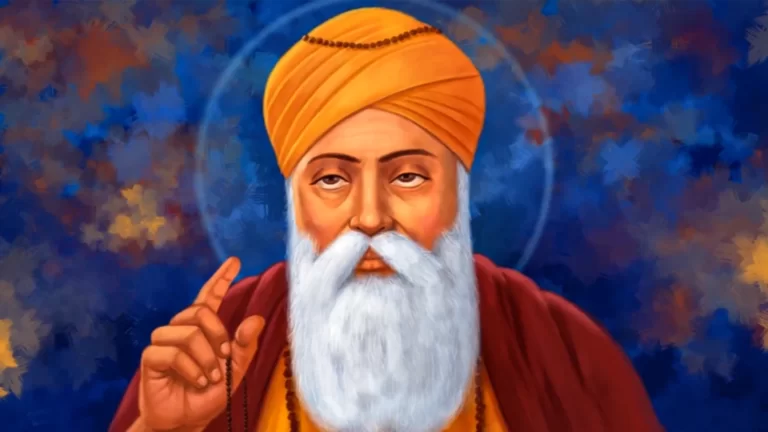The Story of Guru Nanak Sahib in English
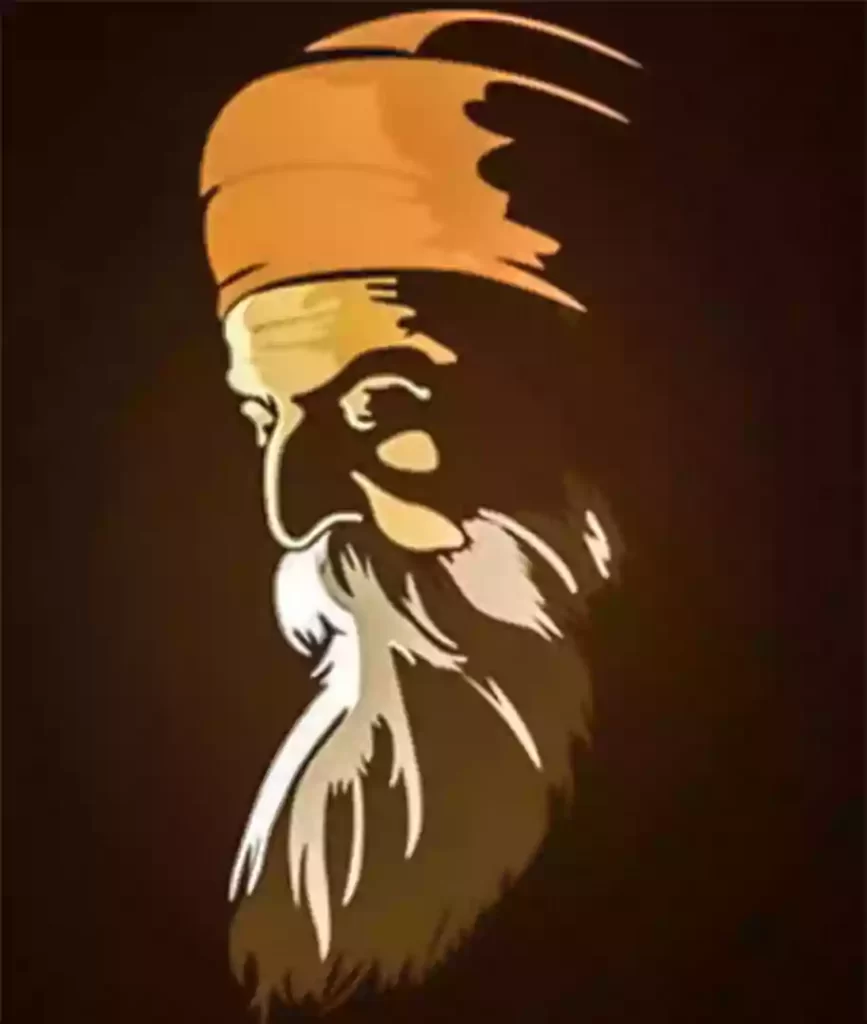
The Story of Guru Nanak Sahib is one of the most significant stories in Sikhism, as it recounts the life of the founder of the religion. Baba Guru Nanak, or simply Bābā Nānak, was born in 1469 and died in 1539 at the age of 70 years. He was the founder of Sikhism and the first of ten Sikh gurus who were responsible for shaping the religion into what it is today. His life had many interesting twists and turns, including being imprisoned in the jail of Muslim governor where he would have otherwise been killed for preaching about Islam as he did not believe that any religion was better than another but that each individual should follow their own faith as they saw fit. Guru Ji was religious person who dedicated whole life to serve humanity. There are number of people who want to know about Sri Guru Nanak Dev Ji because he made lot of sacrifices for welfare of humanity from world leaders. One of the hallmarks of Indian religions is that they enjoy worshiping wandering heroes.
An example is the Buddha, who wandered for six years. Mahavira, who created it as well; and the many Hindu saints and yogis who walked as nomads throughout India. The founder of the Sikh religion, Baba Guru Nanak, took a life of pilgrimage that lasted for about twenty-three years. He went as far as Mecca and Medina and the mythic mountain Sumeru, meeting emperors and carpenters, sages and thugs along the way-according to the Janam Sakhis, a collection of hagiographical stories about his life.
There is a crucial difference between Nanak and the Buddha or Mahavira. Unlike the Buddha and Mahavira, Nanak turned his back on his family and community to find enlightenment. Upon achieving enlightenment, Sri Guru Nanak Dev Ji still returned to the fertile fields of his homeland, the Punjab, and made room in his spiritual life for his old friends and family members. What other scholars of the Sikh religion might have called an attachment to holy men and their institutions; this person called ‘disciplined worldliness’.
Baba Guru Nanak’s Birth & Early Life
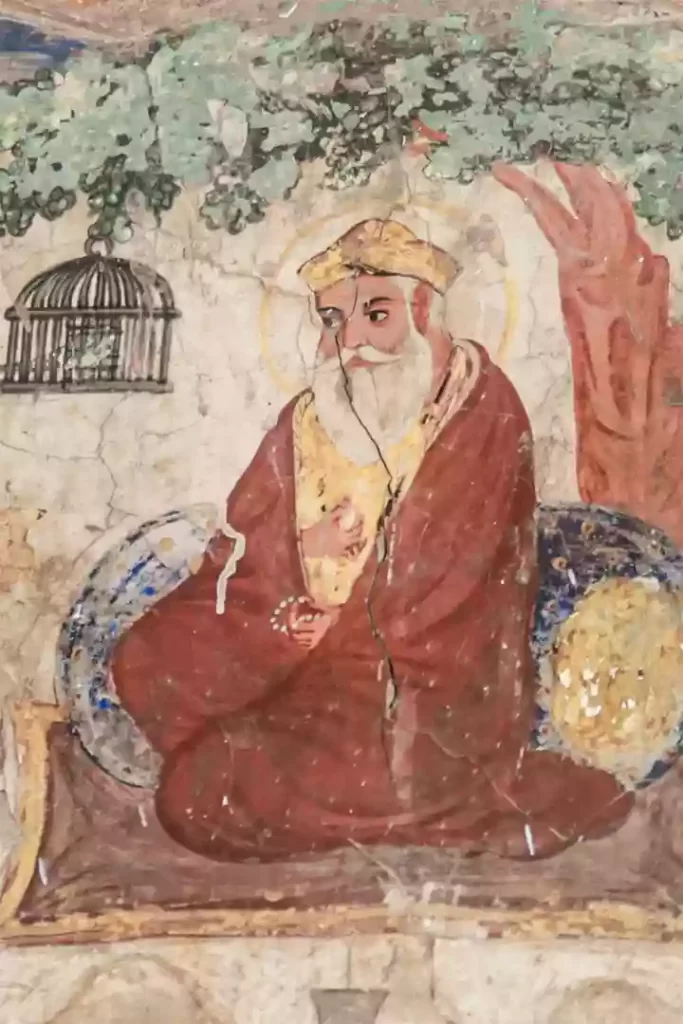
Baba Guru Nanak was born in 1469 to a Hindu family in northwest India. Little is known about his early life except that he grew up with a brother and sister named Sri Chand and Bibi Nanki. By his late teens, Sri Guru Nanak Dev Ji had married twice; by age 26 he would be married three times. Bābā Nānak left home at age 20 after having a series of visions; according to various accounts, he encountered either Mardana (his first disciple) or Guru Angad (the second Sikh guru) who helped him adopt a lifestyle of spiritual devotion. Along with his followers, Baba Guru Nanak traveled throughout India for seven years preaching against caste discrimination and encouraging people to come together under one God.
The villages he explored while writing poetry were not parochial, introverted hamlets as often imagined, but, rather, turbulent spots on a frequently travelled trade route. the rule of Nanak began with the steady flow of culture and conquest from India’s northwest towards the Gangetic plains. During his lifetime, the central Asian warlord Babur, a descendant of Timur, or Tamerlane, swept across the Punjab, captured Delhi from the Lodhi dynasty in 1526, and declared himself the first of the Mughal rulers of India. Various religions, Sufi Islam included, flourished in places like Lahore and Multan while most people continued to follow different forms of Hinduism. Besides Shiva worship, there were yogi sects called Nath’s who drew on Tantric traditions. Devotional movements including the Kabir Sampradaya were also popular.
Baba Guru Nanak Marriage and family life
Nanak was born to Mehta Kalu and Mata Tripta in the village of Talwandi, now called Nankana Sahib, near Lahore in present-day Pakistan. It is believed that Mehta Kalu was the father of Bābā Nānak, formally known as Kalyan Das. He had one sister named Bebe Nanaki. His father died before he was born. Baba Guru Nanak wife name was Sulakhni Ji. She is also known as Bibi Mariam Ji or Bibi Bibian Khaki Wali Kaur Ji. She belonged to the village of Mehrauli, and she is said to have been ten years younger than Sri Guru Nanak Dev Ji. daughter.
Baba Guru Nanak thoughts and his Influences
In some legends, Kabir may have been a friend or even a mentor to Baba Guru Nanak. That wasn’t true, but the two men certainly shared a dislike for people in religious authority positions. According to one of Nanak’s verses:
The Qazi tells untruths and eats filth,
Baba Guru Nanak
Even the way Bābā Nānak dressed seemed to have a polemic, theological element. According to Navtej Sarna, he wore the long, loose shirt of a Muslim dervish, but in the ochre color of a Hindu sannyasi. wrapped around his waist, he put on a white cloth belt, like that of a fakir; he put on a necklace of bones around his neck. Unusual for most Hindu holy men, he wore sandals of many different colors, each one a distinctive style. Atop the outfit he put on a Qalandar turban with one side lowered. It was a tangle of outfits that seem to have been carefully put together to perplex, or even confuse. As for philosophy, however, Nanak was no jerry-rigger. Among his most well-known proclamations is the one which can be loosely translated as, I am neither Hindu nor Muslim. Some interpreters say that these teachings encourage a synthesis of the two major religions of the Indian subcontinent. That’s not the case: he was breaking away from to create something new.
Thus, like Kabir, Nanak’s divinity was nirankar and formless, although still transcendent and accessible to any of us. A favorite verse of Bābā Nānak’s point to this Presence: ‘There is but one God, True is His Name.’ The Mul Mantra of Nanak’s Japji – recited first thing in the morning.
Timeless, unborn, self-existent
Bābā Nānak
Nevertheless, while Kabir retained some rebellious tendencies and all the religious sects of his time centered on one’s personal devotions, Baba Guru Nanak attempted to establish a system that asked of its followers not just adoration but also to play an active role in society, as well as being invested in bringing communities together. When it comes to food, the typical Indian can be tough to please, so he always looks for ingredients, who cooked it, and whether the server has some role in cooking the dish. It’s rooted in the caste system, with its rules about food dictated by taboos about purity and pollution and rules that determine who can prepare food and who is allowed to eat together. Despite decades of reform efforts, in rural and urban India today there remain caste-related folks who would smash dishes if touched by a Dalit, if a dish cooked by a Dalit or a person of a different religion is eaten. Unimaginable for many Indians.
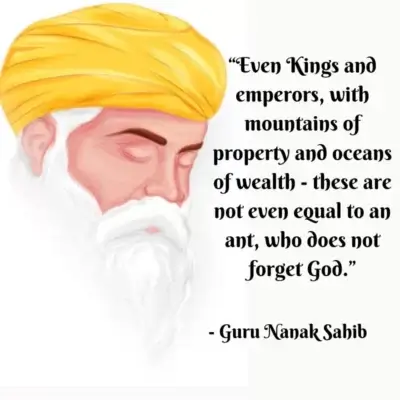
Rather than simple praise of the deceased or a speech about how great he was, a eulogy is an occasion for family and friends to reminisce about the dearly departed. Meals are served family-style in courses to those sitting on the floor. This is done as a symbol of unity, to eliminate distinctions such as caste and socioeconomic class. While the food is typically good and free, the decision to go to a langar at a gurudwara, in Birmingham, or the two in Queens, New York, has a politically motivated edge to it: a protest against the old thinking of society. Born in 1469, he was already 50 years old when he and his wife moved to Kartarpur in Punjab and set up their house there. The community became his first followers, or followers of the faith, – the original meaning of Sikh. Sri Guru Nanak Dev Ji would teach his disciples to both become intimately devoted to God, the Formless and Omnipresent, and pursue a very active life. This act would help strengthen the bond in the community.
While Sikhs, as a faith, were officially born of Nanak’s doctrine, the Sikhism we know today evolved through a gradual and rigorous process. Sikhism is one of the youngest major world religions and is documented quite thoroughly, which gives us a fairly good understanding of its history. Baba Guru Nanak was succeeded by nine other gurus who over 200 years helped to create and consolidate the Sikh faith. At this point, the religion’s differences between Islam and different varieties of Hinduism became sharper, and more clashes with Muslim rulers and then Hindus became commonplace. The last of the gurus in the line Nanak founded was Gobind Singh, who, shortly before his death in 1708, abolished the role of Guru. When his sons were killed in the fight against the Mughals and their allies, he wanted to end any later struggle for succession within his own religion.
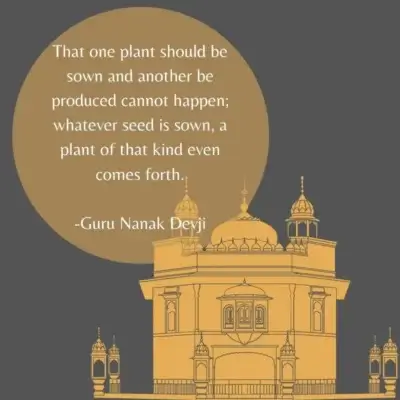
To Indians, perhaps the most problematical element of Sikh identity has been the notion that Sikhs constitute their own ‘quam,’ a term broadly translated as ‘nation’ which is often mistranslated as ‘people who stand together’. The need among some Sikhs to establish the Panth as a modern nation, with boundaries shaped by both ideology and conquest, goes back to the 1940s; Pakistan was established, in part, as a result of the demand for the creation of a homeland for the subcontinent’s Muslims. One can say that partitioning the subcontinent was the most tragic occurrence, seen most evidently in the Punjab, which was ripped to shreds as a result of being subject to end-of-empire map-making. It led to a large Sikh refugee population, many of whom fled for safety to Delhi and sparked a push for a separate Sikh homeland, Khalistan.
Throughout the 1980s, Sikh preachers stirred these embers into ferocity through propaganda, exile and local tension. In 1984, Prime Minister Indira Gandhi ordered an assault on the Golden Temple at Amritsar, the site of the most important Sikh symbols of spiritual and temporal authority, which had become a fortified redoubt of Sikh militancy. Five months later, she was assassinated by her Sikh bodyguard’s day of anti-Sikh massacres in the capital, with more than 3,000 Sikhs killed. Punishments for these massacres have not been adjudicated under the Indian justice system, and military repression continued for several more years before the Sikh secessionists were defeated. Given their previous affiliation, it is difficult to imagine their rehabilitation. And yet, in under twenty years later, a Sikh man became Prime Minister of India, Manmohan Singh. That is not to say that there was an easy story of acceptance and reconciliation. Martyrology has been a deep-rooted part of the Sikh tradition, as well as a powerful sense of justice. Yet there is that simultaneous awareness of a need to return from the mountain world of sagely illumination and pure spiritual transcendence: to live down here, in the world.
The Beliefs of Bābā Nānak
Baba Guru Nanak was a very respected man. He believed that people were not following their religion correctly by just going to temples and worshiping statues. His religious ideas are still respected today because of his strong beliefs. Today, people all over India have celebrations honoring Bābā Nānak’s birth every year on November 2nd, where Sikhs all over come together to share in food, drinks, speeches about Baba Guru Nanak’s life story and beliefs, kirtan, dancing, plays about events from Bābā Nānak’s life put on by volunteers who act out those parts of his life that are most important for us to remember–the Gurpurabs or birthdays. One festival lasts for days!
Guru Nanak Quotes?
There are many Nanak quotes, who is India’s first guru. Many famous quotes have circulated, including There is no Hindu, there is no Muslim and Wherever you are, turn your face to that direction. Interestingly enough, some of his most inspiring words were never spoken—but rather were written in a letter. In fact, that quote about turning your face toward heaven? It was only mentioned in a letter to Mardana (his lifelong friend). Some other quotes that might be familiar include God dwells within man and Equality cannot be won by birth or wealth, which are two more examples from letters Bābā Nānak wrote to people close to him.
A Short Description of Bābā Nānak’s Message
Baba Guru Nanak’s message was simple: believe in one God, treat others as you want to be treated, earn an honest living by your own labor, and realize that there is a soul inside each of us. These principles are common to most world religions but what set Bābā Nānak apart was his conviction that each person can find God within themselves. He stressed social justice for all people regardless of caste or class. His followers tried to live up to these principles by doing good deeds without expecting any reward or recognition for them. Gu
ru Nanak gave a message of hope and peace that has helped many throughout history deal with problems such as violence, injustice, suffering, poverty, racism, social inequality and religious intolerance. Over 500 years later his lessons are still relevant today.
How Did Baba Guru Nanak Die?
Bābā Nānak is believed to have been taken from Ahmedabad, in what is now India, to his final resting place in Kartarpur by a Muslim man named Mardana. In 2012, archaeologists discovered what was alleged to be Baba Guru Nanak’s mausoleum near Dera Baba Nanak in Punjab. An exhumation was conducted, but no DNA evidence could be found. Without any physical remains, some question if Bābā Nānak died at all—though most devotees believe that he did indeed pass away in 1539. His legacy continues today through Sikhism as well as through Hinduism, which recognizes him as one of its own great teachers.
Next Article : Re, The Sun God of Ancient Egypt: Power, Myth, and Symbolism
